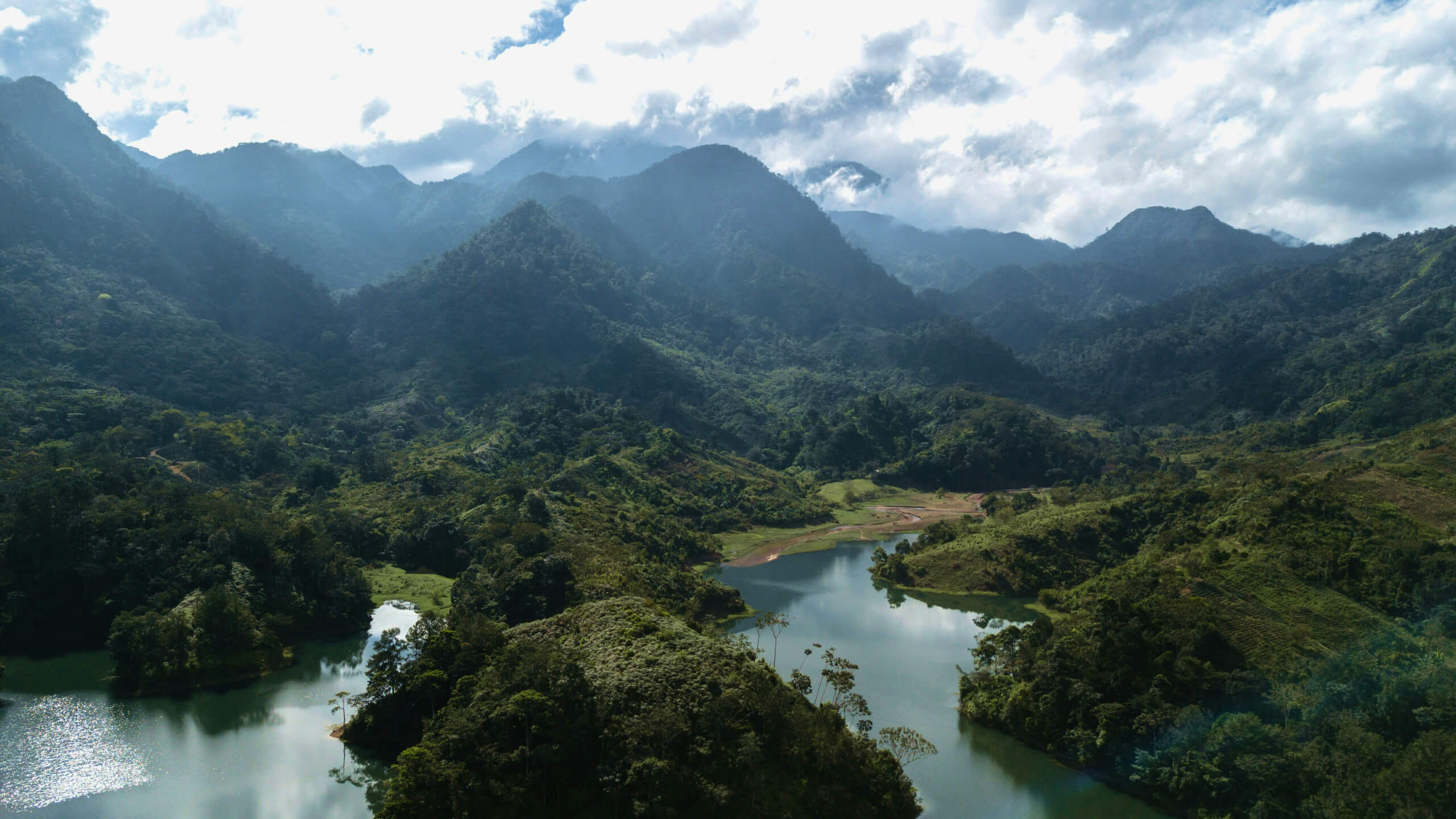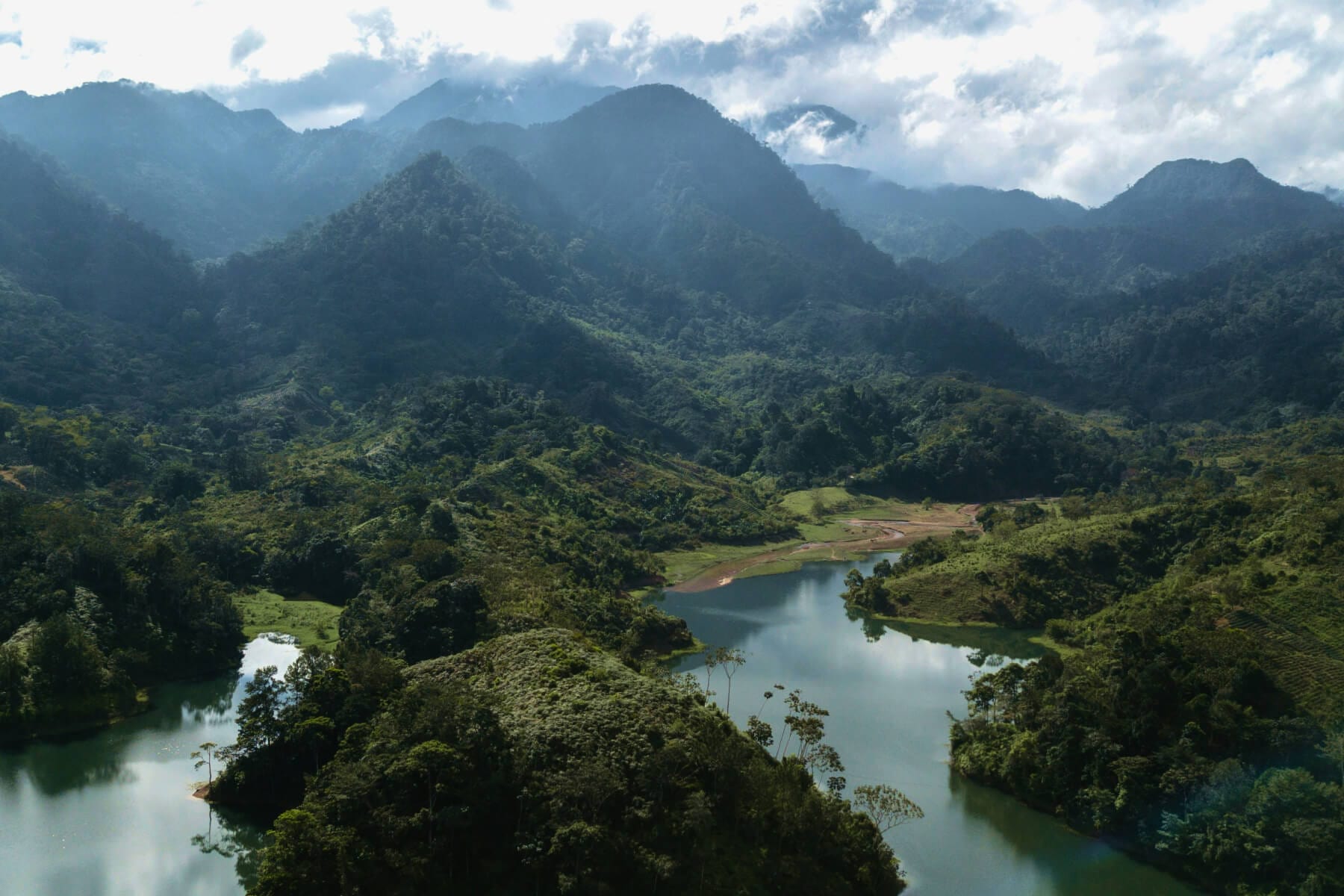Reforestation in
Honduras
Honduras is rich in biodiversity, with coastal plains, central highlands, and Pacific lowlands. Over ¾ of the country is mountainous, with lowlands along the coasts and river valleys. The climate is generally hot and humid, cooling with elevation inland. It’s home to macaws, jaguars, and iguanas, with diverse plant life, colorful insects, and reptiles. National parks and protected areas help preserve the country’s unique biodiversity.
Despite their crucial social and environmental roles, Honduran forests face severe threats from fragmentation and deforestation. Activities like slash-and-burn farming, cattle ranching, industrial agriculture, and conversion to monoculture plantations, such as oil palms, drive this trend. The resulting deforestation not only harms the environment but also affects rural communities by reducing access to essential ecosystem services and increasing erosion and landslides on steep slopes.

Honduras Stats
47.99%
Covered by forest
47.99% of Honduras is covered by forests (5,398,137 hectares).
Honduras, Forests of the World
24%
Primary Forest lost
Over the past two decades (2002-2023), Honduras lost 24% of its humid primary forest.
Honduras Deforestation Rates, Global Forest Watch
96.4%
Natural surface water
It is estimated that 96.4% of rural water in Honduras comes from natural surface water sources.
Honduras, Forests of the World
75%
Habitat Loss
At least 75% of California’s original habitat has already been lost.
60%
Of Water
60% of potable water in California is sourced from forested watersheds.
Project Highlights
Reforestation in Honduras focuses on improving community livelihoods through agroforestry, restoring watersheds for clean water, and stabilizing soil to control erosion. Learn about three recent reforestation projects that planted trees in Honduras!

Cordillera Nombre de Dios Agroforestry
With about 45% of its natural forests lost since 1990, this project aims to address Honduras' severe deforestation issues. Overuse of resources, population pressure, and agricultural expansion have led to soil degradation, water shortages, and increased flooding. This project will restore 4,000 hectares in the Cordillera Nombre de Dios and Corredor Occidente by planting 600,000 trees over three years, improving ecosystems and supporting local farmers with enhanced income opportunities.
Agroforestry and Biodiversity Conservation
This project worked with communities in Honduras to restore and sustainably manage their land by implementing diversified forestry and agroforestry systems. By integrating native tree species with agroforestry crops, the project will contribute to the conservation of species like monkeys, tacuacín, and white-tailed deer — and the recovery of the natural habitat of 170 bird species.


Regenerative Agroforestry with Inga and Fruit Trees
This project utilizes Inga alley-cropping to empower over 300 families, helping them achieve food security and protect biodiversity without complex technology. The alleys eliminate the need for slash-and-burn, enhance climate resilience by surviving droughts, prevent erosion, and safeguard watersheds. Families benefit from increased food production, improved soil health, and the return of creeks and springs, while also maintaining local biodiversity.



